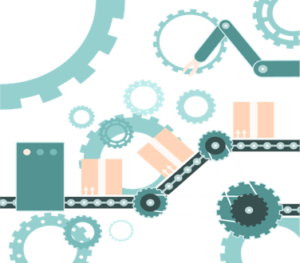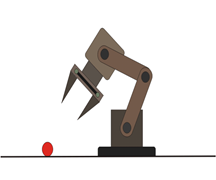 Until now, our focus was on various material handling technics used widely across the globe. We also saw the issues faced by companies while deploying these technics, labor and safety being the two topmost concerns. In fact, we dedicated our previous article “Safety in Material Handling” completely to address the issue of safety in current material handling practices, which largely involve manual labor. In order to reduce the risks and improve efficiency, industries all over the world are searching for better means of material handling. No doubt, most of them are settling over Autonomous Material Handling as an advanced and better option.
Until now, our focus was on various material handling technics used widely across the globe. We also saw the issues faced by companies while deploying these technics, labor and safety being the two topmost concerns. In fact, we dedicated our previous article “Safety in Material Handling” completely to address the issue of safety in current material handling practices, which largely involve manual labor. In order to reduce the risks and improve efficiency, industries all over the world are searching for better means of material handling. No doubt, most of them are settling over Autonomous Material Handling as an advanced and better option.
You would agree that the whole world is going crazy over autonomous systems. These are being used in manufacturing, transportation, food industry and even hospitals. Want to know what this fuss is all about? This article will surely let you an insight on the topic, but we will limit our scope only up to autonomous systems used in material handling, which is most relevant to us.
For the sake of simplicity, we have divided autonomous systems into two categories and we will look into each one individually.
- Immobile systems:
These are the equipment, which are fixed to one place. These are generally considered semi-autonomous systems because although machinery is used for the actual transportation of material, its operation still remains manual.
- Conveyor belts: We have talked about conveyor belts in quite a brief in our previous discussions. Exactly as the name suggests, they are used to convey material over larger distances in the factory premises. It is a million times better than the old fashioned approach of humans lifting and carrying heavy material across the factory which is time consuming and ergonomically difficult. Did you know that the first conveyor belt was devised in as early as 1795 by an American inventor? They have come a long way since then and have seen drastic improvements.
- Pick and place mechanisms: Pick and place
 mechanisms can be used equally for moving light and heavy loads in any industry. They are faster, safer and more efficient as compared to manual labor. They are used to pick up material from a conveyor belt and unload at the desired place. They can also be used to load and unload the material from industrial vehicles. Can you believe that because of their agility and accuracy, they can very well handle fragile material like glass also?
mechanisms can be used equally for moving light and heavy loads in any industry. They are faster, safer and more efficient as compared to manual labor. They are used to pick up material from a conveyor belt and unload at the desired place. They can also be used to load and unload the material from industrial vehicles. Can you believe that because of their agility and accuracy, they can very well handle fragile material like glass also?
Although these immobile systems are better than manual handling, the biggest issue with them is being fixed to a particular place. Moving the whole assembly is stupendously expensive and takes painstaking efforts. It also blocks a considerable space on the shop floor practically rendering it useless for other purposes, even when the machinery is not being used.
- Mobile systems:These are advanced equipment, which are not fixed to a physical location and can be moved to any place where they are needed. These can be completely autonomous requiring no human intervention.
- Mobile robots: Mobile robots can travel in uncontrolled environment without any physical guidance. Autonomous Guided Vehicles (AGV) are becoming more and more common these days in manufacturing as well as service industries. These robots rely on various guidance mechanisms like magnetic tape or color tape sensors, which allow them to travel a pre-defined path. They are mainly used to move material from one department to other in industries, to stock the material in industrial warehouses and also to transport heavy loads in confined spaces.Although these immobile systems are better than manual handling, the biggest issue with them is being fixed to a particular place. Moving the whole assembly is stupendously expensive and takes painstaking efforts. It also blocks a considerable space on the shop floor practically rendering it useless for other purposes, even when the machinery is not being used.
These mobile robots are very concise and do not need a large area for storage. They do not occupy a permanent space on the shop floor, thus allowing free movement of men and material. They require no installation apart from the sensing system, and hence are quick and easy to use than the immobile equipment.
As we have already seen, there are countless advantages of autonomous material handling over manual handling. It improves the efficiency as well as productivity by speeding up the transportation process and reducing the losses. There is minimum damage to the products because of the improved accuracy. It is safer as compared to manual handling, which is by far the most important gain of autonomous handling. All these factors contribute to lower the cost of production, which is the ultimate goal of both, the companies as well as customers.
Can you think of any other improvements and value adds of autonomous handling systems? Do give your opinions in our comments section below. You can also write your views about our articles and feel free to suggest any improvements.



